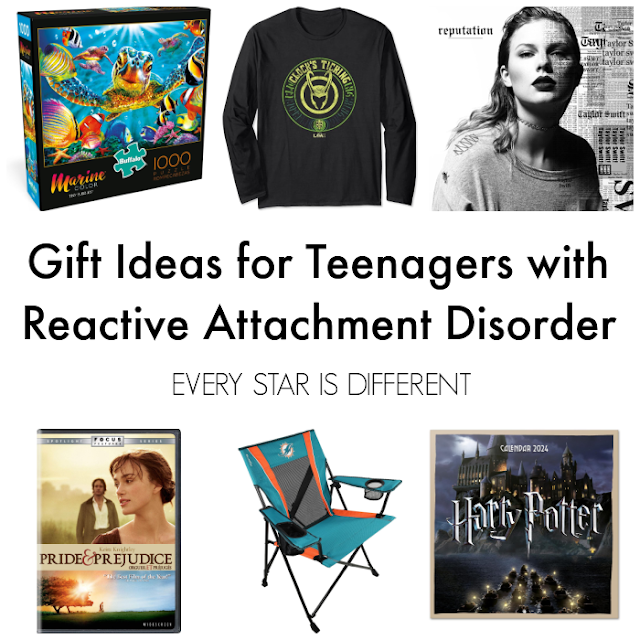Are you looking for gift ideas for a 15 year old girl in your life?
Our daughter Princess is 15 this year.
She seems extremely easy to buy for but finding variety is the biggest challenge.
Many of you know we give the 12 gifts of Christmas.
Here is what she's receiving for Christmas this year!
Gift Ideas for 15 Year Old Girls
Sports Attire
Princess has two older brothers who have educated her in the world of sports.
She has her own favorite teams for every professional and college sport, and she follows her teams.
When it's fantasy football season, she has her own team competing against her brothers and parents.
Like her brothers, Princess enjoys wearing sports attire to show pride and excitement for her teams.
She will love the addition to her sports attire collection this Christmas!
Macaron Silicone Baking Kit and Book
Princess loves to bake. Her favorite cookie is the macaron.
Unfortunately the macaron is a cookie she's never been able to bake.
This year she's receiving all she needs to make macarons successfully by herself.
The cookbook and baking set are going to be a huge hit!
Watch
Though we live in an age when everyone has cell phones, my kids, including Princess, have learned that it's also important to have a watch.
This is especially true in situations where it's not appropriate to pull out a cell phone.
Princess has been begging for a watch for some time.
I'm excited to give her own with options to switch out bands when she wants to.
Movie
Princess loves movies, especially romantic comedies and silly action movies.
Each Friday night we watch a movie as a family.
Due to living in the middle of no where, Wifi isn't available, so we still enjoy DVD and blu-ray discs.
This movie will be a great one to add to our collection. All of us enjoyed the first installment.
Puzzle
Princess loves puzzles.
They keep her hands busy and her brain occupied.
She's found great comfort in puzzles and often uses them as a coping strategy when anxious or working through past trauma.
At this time she likes 1000 piece puzzles as they provide just the amount of challenge she enjoys.
LEGO Friends Set
Princess has always loved LEGO Friends sets. She has collected them since she was little.
I've learned that my kids don't grow out of LEGO when they become teenagers.
If anything, they enjoy LEGO even more.
This year Princess will be receiving a fun addition to her collection that goes along with sets she already has.
Marvel Trivia Pursuit Board Game
I have never met a girl who loves the Marvel movies as much as Princess does. She is so passionate about them.
Princess has watched every movie and every TV series, looking for as many Easter eggs as she can along the way.
I'm excited for her to enjoy this game with siblings as it will test all of the knowledge she's gained about one of her favorite topics.
This will most likely be played with friends as well.
Backpack Cooler, Containers, and Water Bottle
We are a busy family on the go most weeknights and weekends.
Eating meals at home together is a luxury at this phase of life.
Instead our teens are packing meals to eat as they go between activities they're involved in.
Princess is no exception.
I'm excited to provide a cooler that's large enough to fit multiple meals and snacks.
An extra water bottle is always a bonus!
10 Gallon Fish Aquarium with Accessories
Princess has been envious of her older brother's fish tank for some time and has wanted one of her own.
This year she'll be receiving that fish tank with all the accessories.
I'm super excited for Princess to enjoy this gift as it will provide her opportunities to care for other living things and practice being responsible.
Caring for fish is her "experience" gift this year, as it will be ongoing.
Her older brother's fish keep having babies. He's very excited to give her fish as soon as her tank is ready.
Winter Outfit
It's tradition in our home that everyone receives a new outfit for Christmas.
My kids love receiving clothes as gifts, especially after they learned about the Icelandic Christmas Cat and what happens when children don't receive clothes at Christmas. Lol.
Princess especially enjoys new clothes as she tends to wear through clothing items quicker than her brothers.
Castle Arts Colored Pencils Set with Pencil Sharpener and Drawing Paper
One of Princess' passions is art, especially drawing.
She asked for Crayola colored pencils, but knowing just how much drawing she's doing, and how incredible her art work is, I decided to go with some professional colored pencils paired with a new pencil sharpener and drawing paper.
I'm so excited to see her face when she opens this gift as it will be quite the surprise.
Princess loves to have as many colors as possible. She'll be thrilled this set comes with 120 different colors.
Nail Polish Wall Organizer
This gift is one I have been eyeing for years, but couldn't afford from Pottery Barn Teen.
That is until is went on sale for 75% OFF!
Unfortunately it's no longer available, so I'm unable to provide a link.
But let me tell you, it's the perfect storage solution for all of the nail polish Princess has and will look absolutely beautiful on her wall.
It fits so many bottles of nail polish!
Santa Gift: LEGO Disney Princess Set
After I had already purchased the LEGO Friends Set listed above on clearance, Princess found this LEGO Disney Princess Set and fell madly in love.
She has asked for it almost every week for months.
Her LEGO Disney Princess characters are so old and worn from use that they're starting to break.
Princess is trying to collect all of the LEGO Disney Princesses. This set includes so many!
I'm so excited to surprise her with this set on Christmas morning. She will be over the moon excited.
You're My Person Christmas Ornament
Princess wants to be a doctor, specifically a surgeon.
She knows I have watched and loved Grey's Anatomy for years, but didn't allow her to watch it because of some of the content.
This year after much begging and pleading from Princess, I let her start watching the series from the beginning.
She's made it through Season 9 and LOVES it.
I chose this ornament because it represents her desire to be a doctor, her enjoyment of the show this year, and her growth in forming attachments with others.
It will be so fun to watch her open this ornament on Christmas Eve!
Christmas Eve Book: Twilight Series Book 1
Princess hasn't been reading as much as she used to this year.
She has shown interest and asked about the Twilight Series.
I'm excited to get her started on a new series that I'm hoping she'll enjoy.
When Princess does read, she goes through books so quickly!
Christmas Eve Chocolates: Lindt Holiday Assorted Peppermint Truffles
Lindt truffles have always been a favorite chocolate in our family.
Princess loves the white chocolate truffles best.
She was super excited to find this assortment of peppermint flavored truffles that includes white chocolate as well.
I am so excited to enjoy Christmas with Princess this year and watch her face light up as she opens the gifts she's receiving.
I love that so many help her grow and develop talents!
What are you giving the 15 year old girl in your life this holiday season?
If you enjoyed this post, you may also like the resources below.




















.png)

















